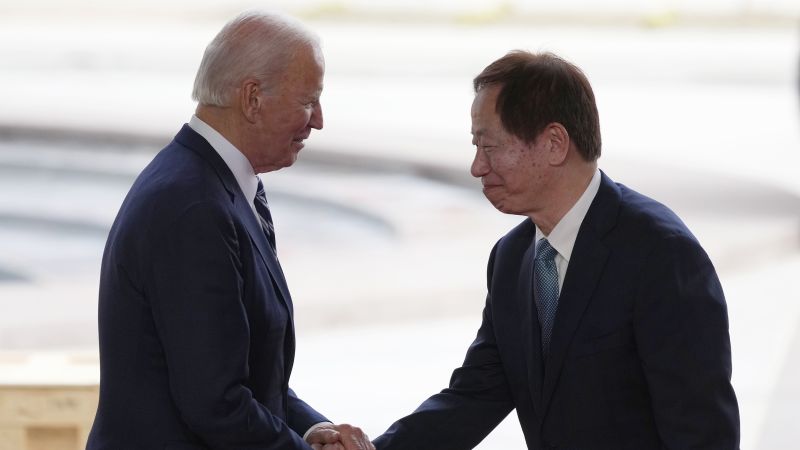The “Great Rejuvenation of the Chinese Nation”: Why the U.S. is Facing the China-US Correspondence
The country is expected to break tradition by giving a third term to the leader who is currently in office, putting China’s relations with the U.S. at increased risk.
Sun said that he was able to focus more on his foreign strategy and vision of the rejuvenation of the Chinese nation. “That inevitably will lead to even more, I would say, contest for influence and a contest for leadership, contest for superiority with the United States.”
Sun said that she expects key positions involving national security and foreign policy to be put in place by the political loyalists of China’s president.
There are people within the government who do not believe that China’s policies toward the U.S. are the best, Sun said, but she predicts that those voices will be “eliminated from within the bureaucracy,” leaving China without a system of checks and balances.
There is a larger issue relating to the relationship that both countries have with each other. Li said that the U.S. tries to approach issues by issue, while China only talks about certain issues once action is needed on others.
China’s strategy toward Taiwan has not fundamentally changed, Li said, but “there’s a perception that Beijing is more and more focused on no longer just deterring independence … but rather, compelling reunification.”
Li said that the perception of the U.S. has resulted in something of a catch-22 situation.
“You get this tit-for-tat retaliation where there’s not a lot of trust … and sort of a back and forth where the U.S. views its actions as responsive to China’s actions, [and] China views its actions as a response to the U.S.’s actions,” Li said.
Meanwhile, the tech industry has become a larger priority for China, especially as the country moves toward the “great rejuvenation of the Chinese nation” by the centennial of the People’s Republic of China in 2049, in which Xi aims to make China a modern socialist country.
China has worked to bolster its domestic research and innovation capacity, which caused those in the U.S. to argue about the differences between China and the US in regards to technology and supply chains.
Li said the situation is essentially an impasse. Progress can be achieved, only that it will require both countries to test themselves in the years to come.
The Strategy for Taiwan to Develop a World Powerhouse in Semiconductor Technology, as Settled by the Highest-Size Silicon Chips
TSMC is considered a national treasure in Taiwan and supplies tech giants including Apple
(AAPL) and Qualcomm
(QCOM). It mass produces the most advanced semiconductors in the world, components that are vital to the smooth running of everything from smartphones to washing machines.
Chang had previously said its plant in Arizona would produce 3-nanometer chips, the company’s most advanced technology, as advances in chip manufacturing require etching ever-smaller transistors onto silicon wafers.
They are like the Hope Diamond of Semiconductors. G. Dan Hutcheson is the vice chair of TechInsights, a research organization specializing in chips. (The Hope Diamond is the world’s largest blue diamond, which now resides at the Smithsonian Institute’s National Museum of Natural History in Washington.)
It is not just the risk that TSMC will take its most advanced technology with it; there are fears that a diminished presence for the company would expose Taipei to greater pressure from Beijing, which has vowed to take control of theself.
“The idea is that if Taiwan became a powerhouse in semiconductors, then America would have to support and defend it,” said Hutcheson. The strategy has been very successful.
Chiu claimed that the chip giant was under political pressure to move its operations and its most advanced technology to the US. He cited the transfer of 300 people, including TSMC engineers, to the Arizona plant. In response, Wu said there was no secret deal, nor was there any attempt to diminish the importance of Taiwan to TSMC.
“It is similar to what happened in the US in the 70s and 80s when manufacturing jobs were being shifted away from the States into other countries. He said that many jobs were lost and cities were bankrupted.
The CEO said that the region was important to the company and it would continue to serve its customers all over the world.
Source: https://www.cnn.com/2022/12/09/tech/taiwan-tsmc-chips-hnk-intl/index.html
Semiconductor production at TSMC: how geopolitical risks play in supply chain decisions and how the Mexican government won’t
Every electronic device has Semiconductors as a part of it. They are difficult to make because of the high cost of development and the level of knowledge required, meaning much of the production is concentrated among a handful of suppliers.
“TSMC’s decision to expand its Arizona investment is evidence that politics and geopolitical risks will play a bigger role than previously in supply chain decisions,” said Chris Miller, author of “Chip War: the Fight for the World’s Most Critical Technology”.
He said the company needs permission from the Taiwan Ministry of Economic Affairs in order to move its most advanced technologies abroad and that it wasn’t likely to get it.
Many experts believe that by the time 3-nanometer chips are being made in Arizona, TSMC’s Taiwan operations would be producing even smaller, more advanced chips.
The team of people that do development work work very closely together. You don’t want to disrupt that. It’s not an easy thing to do,” he said.
